Categories
Latest Updates
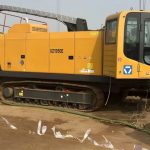
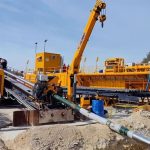
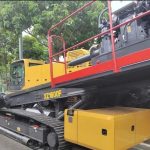
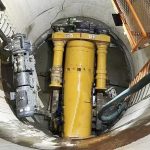
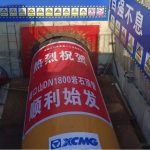
With the continuous advancement of urbanization and the number of years of drainage pipelines increasing year by year, the administrative authorities have gradually strengthened the supervision of the construction of the pipeline network. However, judging from the results of drainage pipeline construction and actual operation, after a large number of buried pipelines are put into operation for several years, due to external forces or their own service life, they will inevitably appear structurally due to poor local geological stripes and other reasons. Functional damage directly causes perforation or leakage accidents. At the same time, damage to the surrounding drainage pipes caused by construction in progress also occurs from time to time. These conditions have seriously affected the normal operation of urban drainage, which is a major part of the urban pipeline network. The safety of water supply brings hidden dangers. The traditional treatment methods are generally excavation and repair or replacement. The old pipe network is basically located under the main urban road or on the edge of the structure. Repair or replacement will involve many factors such as road administration, ground obstacle removal and restoration, and public coordination. Moreover, if the partial damage of the pipeline causes the overall operation to fail, the overall replacement cost will be excessive. Therefore, it is imperative to grasp the operating status of drainage pipelines in time to ensure the safety of urban water supply operations. It is imperative to repair existing defective pipelines in a timely manner, and the trenchless repair technology of pipelines is in operation. The trenchless repair technology of pipelines began to rise in developed countries in the 1970s, and then gradually formed an industry. The trenchless repair technology has unique technical characteristics. Compared with traditional pipeline repair technology, the pipeline , Building safety, and ensuring the smooth flow of traffic has significant excellence, and is increasingly receiving widespread attention from various countries. At present, urban development is gradually moving from the construction era to the maintenance and management era. However, various complex geographic environmental factors such as urban traffic, underground pipelines, environmental and green protection, highways, railways and rivers are affecting the maintenance and repair of pipelines. As a result, the traditional excavation repair technology construction and maintenance measures are costly, and have a huge impact on people’s livelihood and social benefits. Therefore, from the perspective of economic and social benefits, the trenchless technology of urban pipeline network is of great significance to the service life of technical facilities, saving infrastructure investment, energy saving and emission reduction, and improving the level of urban construction management. Harbin is currently in the stage of speeding up development, and water supply pipelines will gradually face maintenance and partial replacement. At present, this forward-looking project has not been put into use in this area, and it can be said that the market prospect is broad. The relevant pipeline cleaning and repairing technologies are now introduced as follows:
Chemical cleaning technology is to use chemical agents (generally use inorganic acids such as hydrochloric acid, sulfuric acid, nitric acid, and weak organic acids such as citric acid, sulfamic acid) and certain technological means to clean pipe networks, equipment, etc., such as degreasing, rust and scale removal. process.
Physical cleaning technology is divided into high-pressure water jet cleaning technology and PIG physical cleaning technology
2.1 High-pressure water jet cleaning technology
High-pressure water jet cleaning uses water pressurized by the equipment pressurization system to form a high-speed water jet from the nozzle. This water jet has a high impact and exploitability, which can remove the scale, metal oxide and other on the pipe wall. The adhesion is removed, and the cleaning quality is very good. Equipped with gun heads of different specifications and shapes, the pipes of different specifications can be cleaned and descaled, and the rotating gun head can be specially customized for the cleaning of large-caliber pipes.
2.2 PIG physical cleaning technology
PIG cleaning technology is not a single technology, it includes on-site tracking technology and transmitting and receiving PIG technology. After the PIG pig is put into the launcher, the pressure difference is generated in the forward direction of the PIG through the conveying medium or compressed air to form a forward thrust, so that the PIG pig is moved forward along the pipeline. During the operation, the PIG body or its cleaning The accessories continuously contact and squeeze the dirt on the pipe wall in the pipe, and scrape the dirt off.
Two issues must be considered before lining repair of pipelines: one is the safety and reliability of the pipeline after lining repair; the other is the applicability of the lining material to the medium. When the overall operation of the pipeline fails due to a local defect, but the subject material has utility value, and the structure itself can be used as a pipeline support, the repair method can be adopted.
The main methods of repair are:
BKP ultraviolet curing pipe repair material (UV lining) is a kind of pipe material impregnated with resin, which is transported to the pipeline to be repaired through the manual work well and hardened there, so that the underground pipeline is repaired, and the BKP ultraviolet curing pipeline repair The material (UV lining) additionally strengthens the support of the piping system. With this process, it can save huge excavation work, reduce the cost of repairing the road and restoring the environment, and has the least impact on the environment.
The soft lining method is also known as the in-situ curing method or the on-site molding lining repair method, which is currently the most popular non-excavation pipeline repair construction method. It is lined with a layer of liquid thermosetting resin on the inner wall of the existing old pipe, and it is cured by heating (using hot water, hot steam or ultraviolet rays, etc.) to form a thin-layer pipe tightly combined with the old pipe.
Spraying method is usually used as pipeline lining for corrosion resistance. It is a technique for applying anti-corrosion and structural lining to pipelines. The high-speed rotating nozzle passes through the pipeline under the traction of the winch, and sprays and deposits the lining material on the entire inner surface of the pipeline under the action of centrifugal force.
Local repair method resin grouting or chemical grouting at the damaged part of the pipeline. Due to external force or joint failure, when a local rupture is formed inside the pipeline, remote grouting (resin) can be considered to seal the local damage.
The repair method can solve the following four main problems:
(1) Make loose, separated, unreinforced old pipes with bearing capacity similar to stone arches;
(2) Provide additional structural performance to help the damaged pipeline to withstand the structural load;
(3) It has anti-repair function;
(4) It can replace the missing pipe section. In drainage pipe repair, chemical grouting with urea ester or similar materials has been used for many years, especially in North America.
The stainless steel sheet lining repair technology is to line the inside of the pipe with a steel plate. The steel plate is in the form of a coil, which is welded inside the pipe and formed as a whole. Lining steel plates inside the pipeline can increase the overall pressure resistance of the pipeline and also has an anti-seepage effect. Because the stainless steel lining can prevent corrosion of the inner wall of the pipeline, reduce the roughness of the inner wall of the pipeline, and increase the flow of water, the lined pipeline is safer, lighter, more economical, and has a longer service life to achieve the purpose of repair.
Trenchless pipeline repair technology is a comprehensive engineering technology involving multiple knowledge fields and multiple technical fields. It involves disciplines such as engineering mechanics, fluid mechanics, material mechanics, polymer materials, mechanical design and manufacturing, and electronics. The pipeline CCTV imaging detection technology, as a supporting technology for trenchless pipeline repair, brings great convenience to the repair work of trenchless pipelines. Pipeline CCTV (closed-circuit television) imaging detection technology is a special technology for video imaging inspection of the scale condition of the pipeline before cleaning, the cleaning quality after cleaning, and the quality of the pipe lining after repair. It is composed of an automatic crawler, an external control system, an image recording system, a monitor system, a signal wire, a signal wire rack, etc. The automatic crawler can automatically advance and retreat in the pipeline. It is equipped with a micro-control processor and a front-mounted camera component that can adjust focus, image enlargement, reduction, fixing, negative image, and mirroring as the main lens, which can perform up and down, Left-right and rotating swing; the rear is installed with a lens, which can be synchronously detected when retreating. The external control system, image recording system, and monitor system are unified and integrated using laptop computers, which are small in size, clear in weight and easy to use; inspection information can be recorded on-site, and the running status of the car (including running distance, control information, etc.) can be displayed simultaneously. The development of trenchless repair technology has provided many possibilities and guarantees for the operation and maintenance of the pipeline network. Its overall advantage is that the negative impact of repair is small, the repair occupies less space, and the impact on the ground, traffic, environment and surrounding underground pipelines is very weak. It is foreseeable that in the near future, with the continuous research and development of new materials and repair technology, after the mass production of repair materials in China, the trenchless repair technology will enter a new stage of development, and this technology will definitely be operated by water supply and drainage pipe networks. It is widely recognized by enterprises that entering the market earlier will gain a wider angle, so it is imperative to promote trenchless repair technology.
